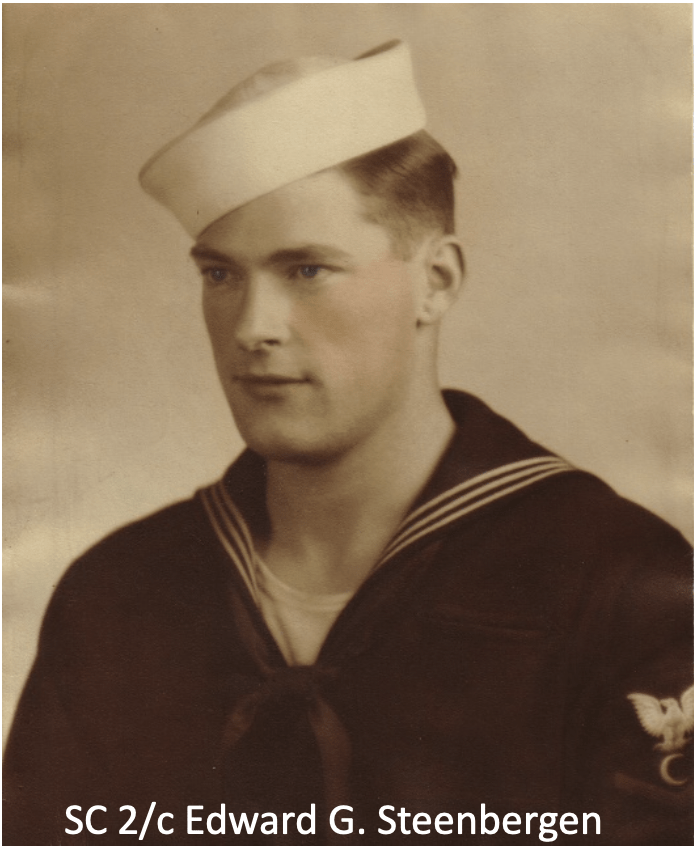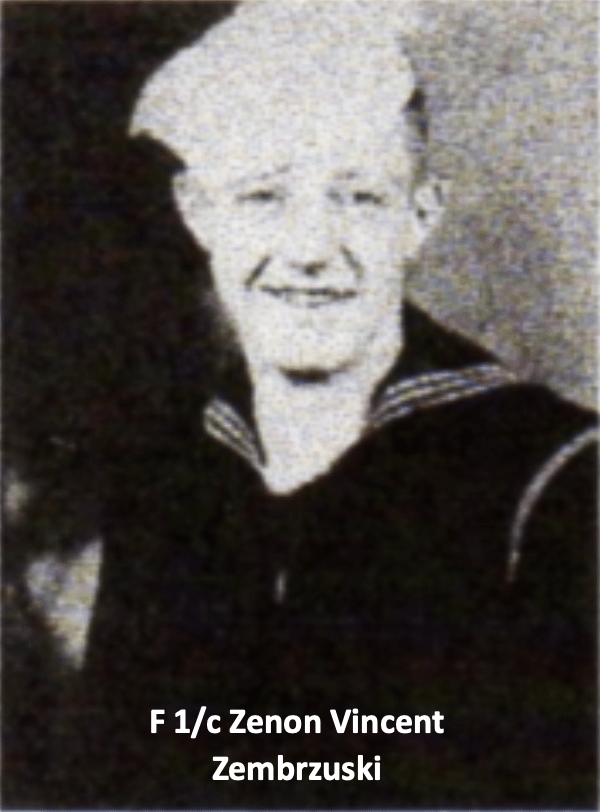By Dennis A. Steenbergen, Landing Craft Support Museum
15 February is the anniversary of the loss of three LCS ships to Shin’yō suicide boats at Mariveles Bay during the liberation of the Philippines. U.S. forces were massing in February 1945 to launch an amphibious and land attack on the Bataan Peninsula and Corregidor. Mr. Steenbergen has an intense personal connection to the loss of these ships, which is discussed in the post that follows.
A group of six Landing Craft Support (LCS) ships was readying to provide gunfire support for an amphibious landing at Mariveles when fast Japanese motorboats known as the Shin’yō-class came speeding out of the darkness and slammed into the hulls of four of the LCSs, detonating their 600 pounds of high explosives.
Three of those ships sank within minutes. The fourth was able to steer onto the beach and avoid sinking. Seventy-seven sailors were lost in the sinkings and dozens more were wounded. In addition to American lives, thousands of their Filipino brethren gave their lives to defeat the Japanese occupiers and liberate the Philippines.
The Landing Craft Support ships of WWII played a pivotal role in the Liberation of Mariveles Bay on 16 February 1945. Six of the small LCS ships were anchored across the mouth of the bay to provide security screening for the US and Filipino forces landing on the shores of your city to recapture the Bataan Peninsula from the occupying forces of Japan.
My father, Ship’s Cook 2/c Edward G. Steenbergen, served aboard the USS LCS 49 during WWII. Luckily, he left the ship just days before it was sunk in the Mariveles Bay and was on a hospital ship at Subic Bay at the time. He was lucky because the first suicide boat slammed against the port side of LCS 49 and blew up right where he would have been sleeping.
Those brave men of the United States Navy Amphibious fleet sailed into Mariveles Harbor as boys, and they would come out as battle-hardened veterans.
Seventy-seven of their number would not come out at all. They are now entombed in the Landing Craft Support ships resting at the bottom of Mariveles Bay or are buried in the American Military Cemetery in Manila.
I would like to take a little of your time to share a story that was told to me by a man who lived through it. That young man was aboard LCS 49 when she went down. His story has gone untold for seventy-seven years.
At a number of recent Landing Craft Support Museum reunions, I got to know that young sailor very well. His name was Zenon Vincent Zembrzuski. He was a small unassuming man of Polish descent that had survived the Japanese attack and lived the rest of his life in the quiet suburbs of Detroit, Michigan. He was a city bus driver. Most of his friends never knew he was a hero of WWII. He would never talk about his time aboard LCS 49. I had to pry his story from him.
Zee, as he liked to be called, was spared death on the morning of 16 February 1945, by either divine intervention or just dumb luck. Zee was in the engine room standing the “mid-watch.” As a young lad of eighteen years, he had just learned the finer points of smoking cigarettes to relax and went topside to have a smoke. He no sooner stepped onto the main deck of the ship and was about to light up, when the first suicide boat hit the port side of the ship in a blinding flash of light and a ball of fire just feet away from him. The resulting explosion sent Zee flying into the water. He found himself dazed with minor burns and injuries and floating in the dark, oily, and fiery waters of Mariveles Bay surrounded by floating burning debris, which moments before had been parts of his ship.
He was horrified to find himself covered with oil and gasping for air and treading water among the badly mangled bodies of his shipmates. He soon found a floating life jacket and strapped it on.
As his head cleared from the explosion, he started to hear muffled voices and screams of badly injured shipmates. He was again dazed by another explosion of another suicide boat slamming against the starboard side of LCS 49. In quick succession, he witnessed LCS 7, LCS 26, and LCS 27 suffer the same fate as his ship. The resulting explosions sent three of the four ships to the bottom of Mariveles Bay. Only the LCS 27 was able to avoid sinking by steering the ship onto the shore.
Zee would tread water for what seemed like hours, looking for injured shipmates floating in the oily burning waters and helping his shipmates onto floating debris while machine-gun bullets whizzed by. After, what seemed like hours, Zee became exhausted. He leaned his head back in the life preserver and closed his eyes and surrendered his fate to God. He was awakened sometime later in the daylight hours by muffled voices of sailors on a PT boat calling to him and reaching to pull him to safety. It is unknown just how many men Zee saved that morning. It didn’t matter to him. He had a duty to do, and he did it.
His story of bravery and heroism was common in the waters of Mariveles Bay by the sailors of the other LCS ships doing the same things that Zee was doing for his fellow shipmates on 16 February 1945. The men of the LCS ships need to be remembered for their selfless acts of courage and heroism.
Many of the men that survived their ordeal never told their families of what they endured in the waters of Mariveles Bay and most of their stories have been lost to history. Zee passed away a few years ago without ever receiving the accolades from his country or even a purple heart medal for the injuries he received in the dark waters of Mariveles Bay.



